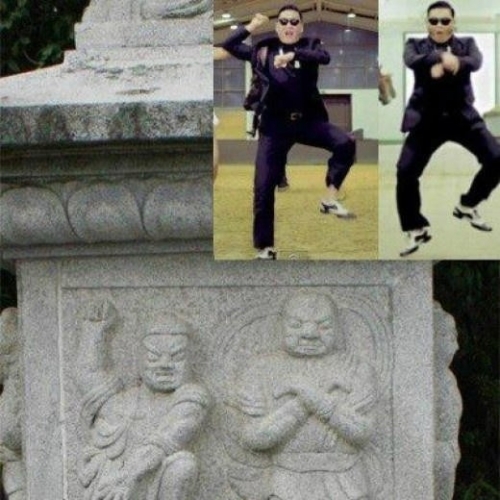
Happy Halloween! Since it’s almost time for the year’s only holiday that encourages you to pretend to be someone else, it’s the perfect opportunity to let you know that if you live in Thailand, your local monks might not be what they seem. In fact, the Global Post reports, they might be meth dealers. Several Thai monks have been busted recently for buying, using, and dealing speed pills. One even insisted that he was using the drug money to refurbish his temple. Maybe I’ve just been watching too much Breaking Bad, but for some sad reason this story didn’t even surprise me. How’s that for some legitimate 21st century cynicism?
In Tibet, the self-immolation crisis continues as the count of those who have burned themselves alive reaches 58. The latest was that of a Tibetan farmer on Tuesday. In response, the Chinese government has announced an almost $8,000 cash reward for information about planned self-immolations.
And in Burma, the violence between the Rakhine Buddhists and the Muslim Rohingya continues as well. The latest flareup left two people dead and over a thousand homes burned to the ground. (Note: please do not confuse this Buddhist-Muslim violence with that going on in Bangladesh, where a Facebook photo of a burned Koran resulted in the torching of Buddhist homes and temples.) Buddhist monks, and now, hundreds of university students have led protests against the Rohingya, who are viewed as illegal immigrants and are not considered to be citizens of Burma.
All in all, it’s a horrible case of the strong picking on the weak, mixed in with unhealthy ethnic nationalism. The Washington Post ran an informative article on Wednesday about it, if you’d like to learn more. In a nutshell, the Rohingya are a nationless group with practically no rights. A 1982 Burmese law stripped the Rohingya of their citizenship, making it illegal for them to travel, receive an education, marry, or have children without government permission. Nowadays, the Post reports, they are “subjected to modern-day slavery” and “forced prostitution.” And these are the people that the Rakhine Buddhists are insisting be compelled to leave the country and at times, diverting the aid sent to them by international NGOs. Wonderful.
On our home turf here in the United States, the nation’s march to Election Day trudges onward. The New York Times ran an excellent article last Sunday about something that we Buddhists should be interested in: our country’s collective refusal to face the facts. “Of their serious presidential candidates,” the article’s author Scott Shane writes, “Americans demand constant reassurance that their country, their achievements and their values are extraordinary,” despite the dismal truths of America’s high child poverty and infant mortality rates and low educational performance scores. “It is impermissible to dwell on chronic, painful problems, or on statistics that challenge the notion that the United States leads the world,” Shane continues. In other words, no one wants to hear the truth about our current situation. It’s a painful exaggeration of what goes on daily with our own small selves.
Have you guys ever heard of a psychosis called “India Syndrome”? It’s a neologism increasingly being thrown around by doctors and concerned parents alike. Unrecognized by the DSM IV (not to mention most doctors), the controversial India Syndrome is said to afflict foreigners traveling to India who, leaving behind their worldly possessions, disappear. Sometimes they are found, sometimes they are not—but when they are, they’ve often become permanently delusional. India Syndrome was brought to our attention by a Huffington Post article on missing Irishman Jonathan Spollen, who may or may not be suffering from the mysterious affliction. Let’s hope he turns up fine.
As I do feel like it’s my solemn duty to impart some joy to you on Friday afternoons, I’m proud to pass on the news that assiduous investigative reporters have found the origins of the South Korean viral YouTube hit “Gangnam Style.” And wuddya know: it’s Buddhist!

Psy, of YouTube fame, might have been inspired by these Buddhist temple carvings in Korea.
If you don’t know what “Gangnam Style” is, don’t worry. You’re probably better off not knowing. But if you really want to take the plunge, the original YouTube video can be found here.
Oh, and one more thing. Remember that Tibetan Buddhist statue carved from a meteorite that I talked about in Buddha Buzz a few weeks ago? Turns out it’s probably a fake.
Thank you for subscribing to Tricycle! As a nonprofit, we depend on readers like you to keep Buddhist teachings and practices widely available.